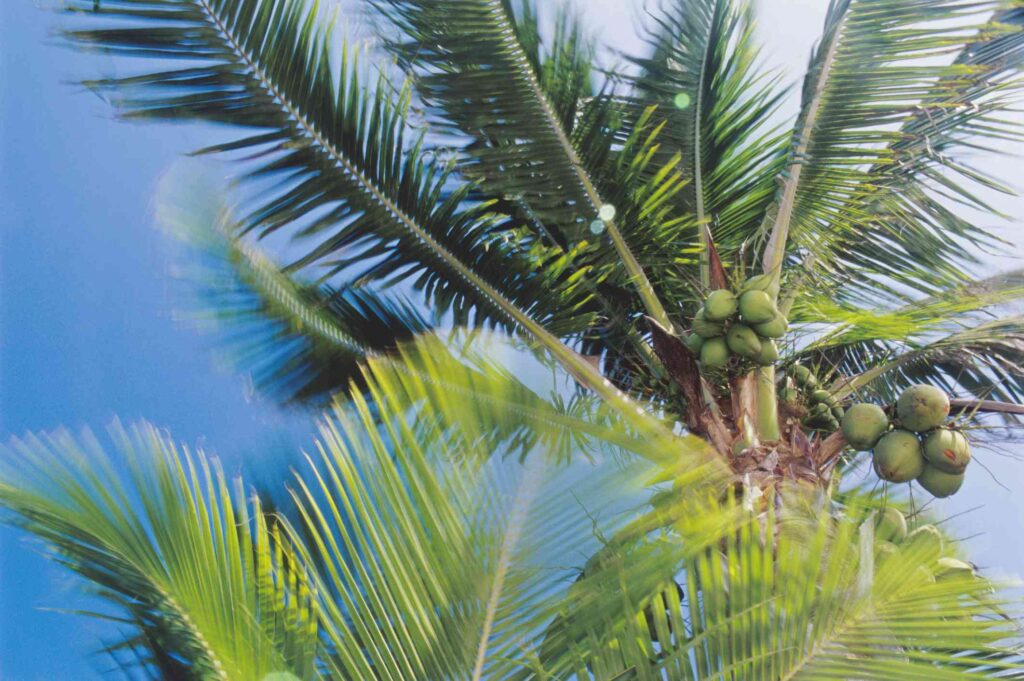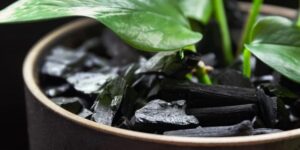
I. Introduction
Tropical trees, with their towering stature and lush foliage, evoke a sense of wonder and admiration. Among these botanical wonders, coconut and palm trees stand out for their distinct characteristics and cultural significance. In this article, we delve into the differences between coconut trees and palm trees, exploring their morphology, geographic distribution, economic importance, and cultural symbolism.
II. Morphological Characteristics
A. Coconut tree (Cocos nucifera)
Coconut trees, known scientifically as Cocos nucifera, possess several unique features that distinguish them from other palm species. Their long, feathery fronds, known as palm leaves, fan out from a central crown atop a tall, slender trunk. Coconut trees produce large, spherical fruits known as coconuts, which have a hard, fibrous outer husk enclosing a single seed and a cavity filled with sweet coconut water. The trunk of a coconut tree is smooth and grayish-brown in color, with characteristic rings formed by leaf scars.
B. Palm tree (Arecaceae family)
Palm trees belong to the Arecaceae family and encompass a diverse group of species with varying morphological characteristics. While palm trees share some similarities with coconut trees, such as their elongated, palmate leaves and tall, unbranched trunks, they exhibit a wide range of leaf shapes, growth habits, and trunk textures. Some palm species feature fan-shaped leaves, while others have pinnate or feather-like foliage. Palm trunks may be smooth, rough, or covered in spines, depending on the species.
III. Geographic Distribution and Habitat
A. Coconut tree
Coconut trees are native to coastal regions and tropical climates around the world, including parts of Southeast Asia, South Asia, the Pacific Islands, and the Caribbean. They thrive in sandy, well-draining soils and require ample sunlight and rainfall for optimal growth. Coconut trees are commonly found along coastlines, where they play a crucial role in stabilizing sandy soils and protecting against erosion.
B. Palm tree
Palm trees have a global distribution and can be found in a wide range of habitats, from rainforests and deserts to grasslands and urban areas. They are highly adaptable to diverse environmental conditions and can tolerate varying levels of moisture, temperature, and sunlight. Palm trees are particularly abundant in tropical and subtropical regions but can also be found in temperate climates and arid landscapes.
IV. Economic and Cultural Significance
A. Coconut tree
Coconut trees are economically important plants with versatile uses. The coconut fruit provides food, water, oil, and fiber, making it a valuable commodity in many tropical economies. Coconut products such as coconut milk, coconut oil, and coconut water are widely used in cooking, cosmetics, and traditional medicine. In addition to their economic significance, coconut trees hold cultural symbolism and are revered in many cultures for their beauty, resilience, and abundance.
B. Palm tree
Palm trees also have significant economic value and cultural importance. Palm oil, derived from the fruit of certain palm species, is one of the most widely consumed vegetable oils globally and is used in various industries, including food production, cosmetics, and biofuels. Palm fronds are used for thatching, weaving, and construction materials in many tropical regions. In addition to their economic contributions, palm trees are valued for their ornamental beauty and are often planted in landscapes, parks, and gardens for their iconic silhouette and tropical allure.
V. Conclusion
While coconut trees and palm trees share some similarities in their morphology and habitat preferences, they exhibit distinct characteristics and have unique economic and cultural significance. By understanding the differences between these iconic tropical trees, we can deepen our appreciation for the rich diversity of plant life and the vital role that trees play in sustaining ecosystems and supporting human livelihoods. Whether swaying in the ocean breeze or towering above the canopy, coconut trees and palm trees continue to captivate our imagination and inspire awe in the natural world.




